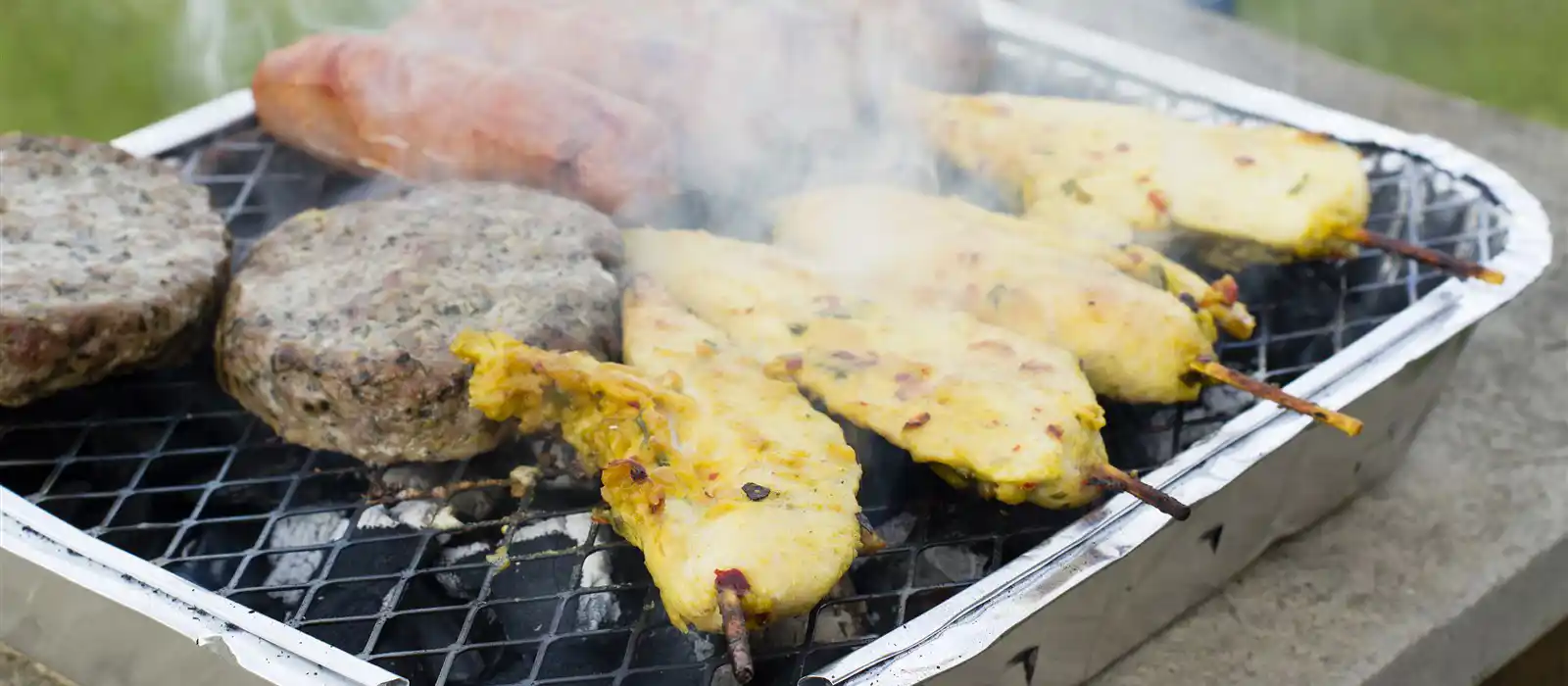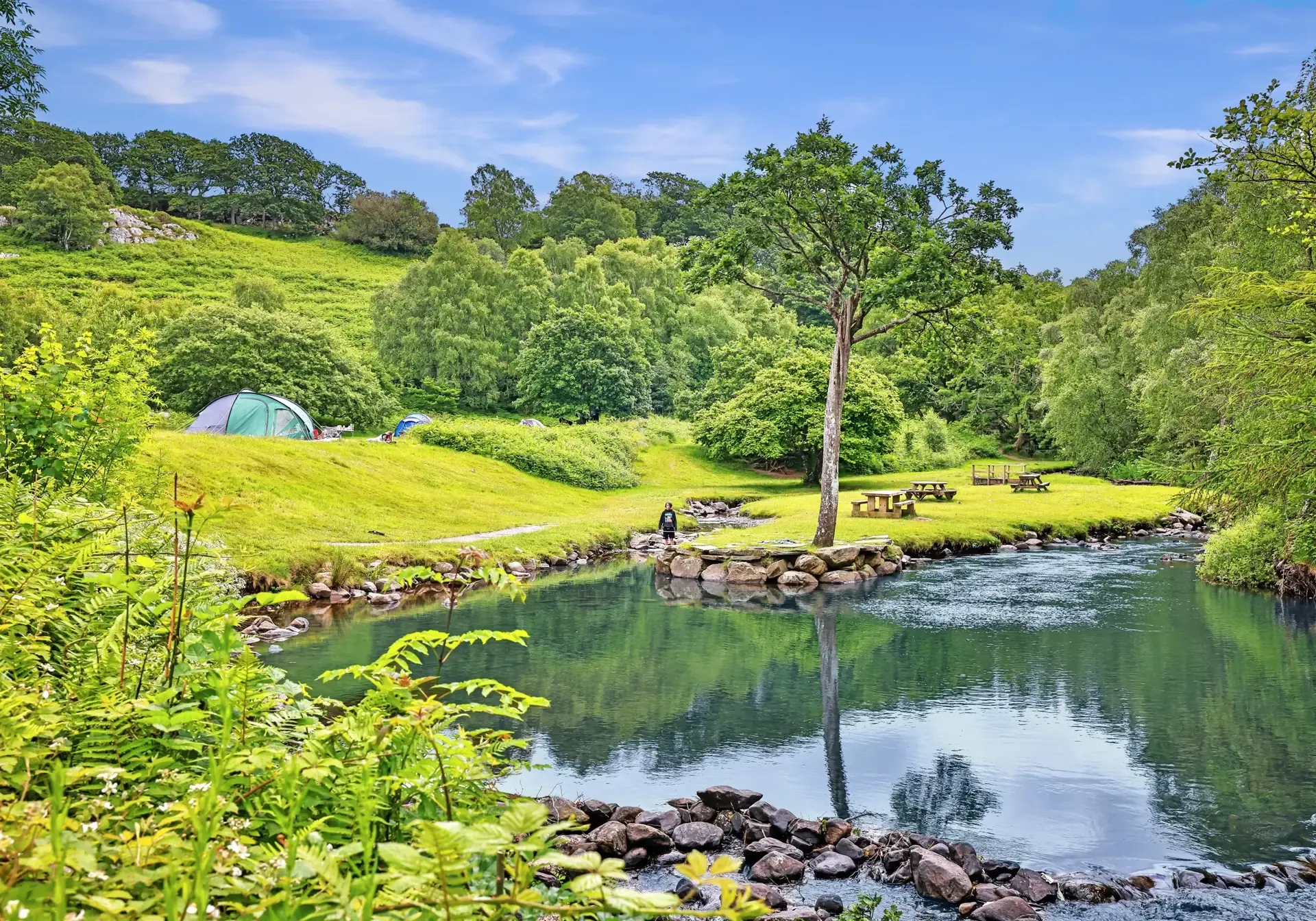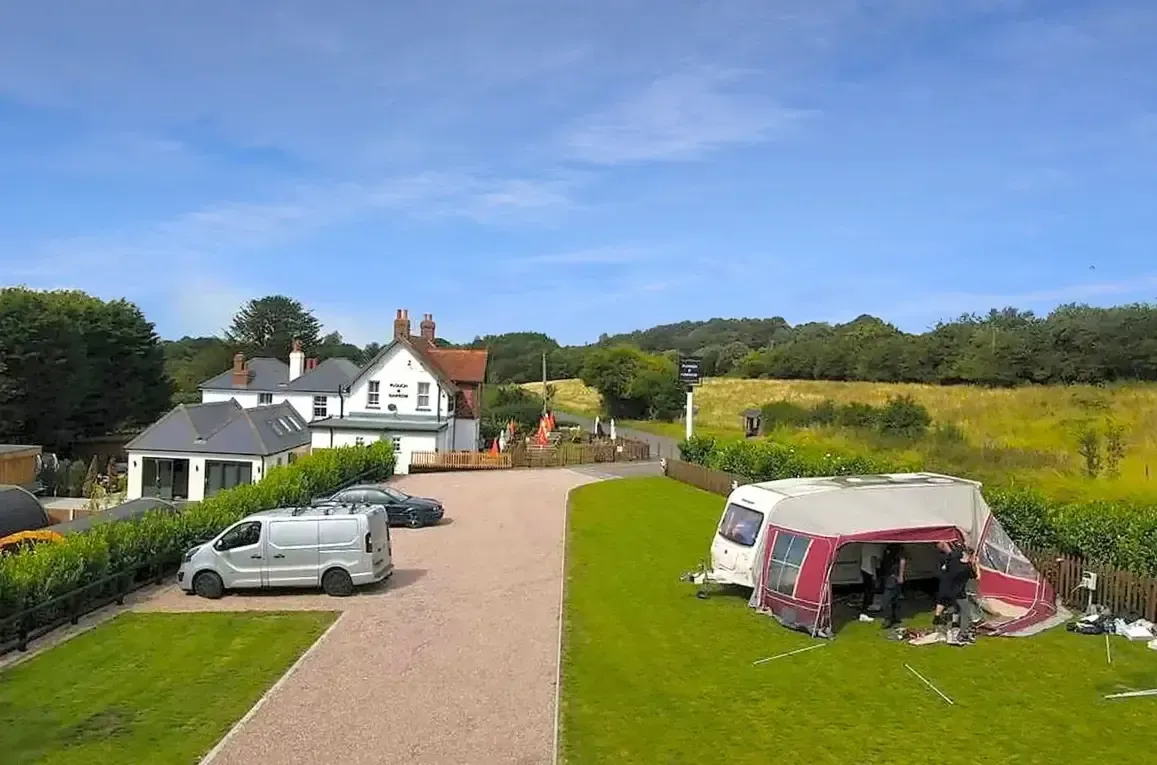Hopefully you're already aware that carbon monoxide gas is extremely dangerous. Recent TV campaigns have highlighted the risks of poorly serviced boilers and gas cookers in the home, but what you might not have realised is that carbon monoxide is a danger when you're camping too.
In recent years there have been a number of deaths caused by people using barbecues and gas stoves in their tents, usually because of cold or wet weather. Likewise using unsealed barbecues and fires provided in glamping accommodation, which you might automatically assume are safe.
Burning fossil fuels of any sort will produce carbon monoxide - and doing so in any enclosed space can cause levels of the gas to become dangerous.
Carbon monoxide is a gas you can't smell, taste or see and so there is absolutely no way to detect a problem until it is too late.
The bottom line is that you should never bring a BBQ or fuel burning appliance, such as a camping stove, into your tent or awning.
For glampers, if your accommodation has a fire inside - or a central BBQ in some cases - you should ensure that the door to the fire is kept closed, or that the fire is completely extinguished and ashes disposed of outside before going to sleep. There should be a carbon monoxide alarm installed and you should test that it works. If there's a fire but no alarm, report it.
Below you will find information on what carbon monoxide poisoning is, why it's dangerous to campers, the symptoms to look out for and how to prevent carbon monoxide poisoning when camping.
Knowing the facts about carbon monoxide makes it a simple matter to protect yourself and others so that you can have a safe and enjoyable camping experience.
What is carbon monoxide and why is it poisonous?
Carbon monoxide is a poisonous gas that is odourless, tasteless and invisible to the human eye.
You normally hear about carbon dioxide being produced when burning fossil fuels such as charcoal, wood, gas, petrol and oil. If a fuel stops burning completely due to lack of oxygen, carbon monoxide (CO) is produced instead of carbon dioxide (CO2). Carbon monoxide can be produced as part of a natural process, as in the case of a BBQ or fire going out, or as a result of an appliance not working properly.
Since carbon monoxide cannot be smelled, tasted or seen, campers can be completely unaware that carbon monoxide is in the air around them and that they are breathing it in and being poisoned. Everyone can be affected whether they are children or adults, young or old, or male or female.
When carbon monoxide is breathed in it combines with the haemoglobin in our red blood cells to form carboxyhaemoglobin, which prevents our red blood cells from being able to transport oxygen around the body as they normally do. This lack of oxygen causes cells and tissue within the body to die.
The early symptoms of carbon monoxide poisoning can be mistaken for having the flu, a headache or food poisoning. This means that many people do not take suitable action to remove the source of the carbon monoxide and seek medical assistance because they are not aware that they are being affected.
How is carbon monoxide dangerous to campers?
Every year a small number of people, particularly children, die due to lack of awareness of carbon monoxide when camping. Although people are generally aware of the carbon monoxide risk with gas appliances, many recent deaths have been caused by overnight exposure to carbon monoxide as a result of bringing disposable charcoal BBQs into tents, awnings and shelters.
We all use fuel burning appliances such as BBQs, gas stoves, petrol generators and so on when camping - and all of these can potentially produce carbon monoxide. But so long as you use BBQs and fuel burning appliances correctly, you can keep yourself and others perfectly safe.
BBQs
Having a BBQ when camping is brilliant, but you need to be are aware of the following carbon monoxide facts and advice in order to use your BBQ safely:
- BBQs give off carbon monoxide for hours after use, even if they are no longer smoking.
- Never take a BBQ into your tent, awning or any enclosed area such as a caravan, motorhome or cabin.
- Never use a BBQ to heat your tent.
- Always use your BBQ in an open area that has plenty of ventilation, far away from tents or other sleeping areas.
Gas stoves and other fuel-burning appliances
Any equipment which uses gas, wood, petrol, oil, kerosene, or diesel can pose a risk of carbon monoxide poisoning. This includes camping stoves and fuel burning lamps, fridges, heaters, generators, and any other fuel-burning equipment.
The same simple rules need to be observed when it comes to using any fuel burning appliance:
- Never use a fuel burning appliance inside a tent, awning, caravan or any other enclosed space.
- Never use a fuel burning heater or appliance to warm your tent, caravan or sleeping area.
- Always make sure the area in which you use a fuel burning appliance is well ventilated.
- Always make sure your equipment is in good working order and that any hoses are securely attached and not damaged. Change your canisters in a well-ventilated open space, follow the manufacturer's guidelines carefully and be sure to turn off the supply properly before doing so.
There are safe ways to keep warm when camping. Extra insulation above and below your bed will really help keep you warm when sleeping and you can also use electric heaters if you have an electric hook-up.
Symptoms of carbon monoxide poisoning
Carbon monoxide poisoning can be fatal so it is important to be aware of the symptoms even if you think you have put preventative measures in place.
The key carbon monoxide symptoms to look out for are:
- Headaches
- Feeling sick or dizzy
- Feeling tired or confused
- Vomiting
- Being short of breath or having difficulty breathing
- Stomach pain
Carbon Monoxide poisoning can often be confused with food poisoning or the flu. As you inhale more gas, more severe symptoms will develop, such as memory loss, hallucinations, loss of balance or vision and loss of consciousness. Inhaling significant amounts can cause permanent health problems such as organ damage and brain damage, and will eventually cause death.
Being at high altitudes can increase the risk of carbon monoxide poisoning since there is less available oxygen in the air.
If you notice any of the symptoms above in yourself or others, you should seek medical assistance immediately.
Carbon monoxide detectors
If you want extra reassurance, you need to think about how to detect carbon monoxide - and the only option you have is to purchase a carbon monoxide detector to take with you on your camping trip. The best carbon monoxide detectors have loud alarms to wake you when carbon monoxide is detected.
Bear in mind that carbon monoxide detectors should never be completely relied upon. You should always take precautions to prevent carbon monoxide poisoning whether you are using a carbon monoxide detector or not.
It'll never happen to me though...
If you've read this far down, you'll be conscious of the risk, but it's still too easy to absent-mindedly do something silly. To try and make the point stick, here are some sad stories about people who have died of carbon monoxide poisoning while camping.
- July 2011, Hazel Woodhams died as a result of using a charcoal barbecue in her tent. She was 31.
- As did 50 year old Vincent Clare from Milton Keynes, while staying at a campsite near Ringwood in the New Forest in the same month.
- Kenneth Chaplin, 63, was another victim after putting a gas heater in his tent to keep warm during a bikers' rally in June 2013.
- In 2013, 14 year old Hannah Thomas-Jones died from carbon monoxide poisoning after leaving a used barbecue inside the porch of their tent in Shropshire. Three other family members were found unconscious but survived.
- In August that year, 20 year old Bethan O'Brien died at a campsite in Braunton, Devon.
Stay smart and stay safe
To keep yourself and others safe from carbon monoxide: never use BBQs, gas stoves and fuel burning appliances such as heaters and fridges into your tent or awning or any enclosed area. Always use them in an open area with good ventilation.
Be aware of the carbon monoxide poisoning symptoms to look out for and remember that BBQs can produce carbon monoxide for hours after use, even if they are not smoking and appear completely extinguished.
Keep warm by all means, but do it in a safe way. Take the right sleeping bag for the season, dress appropriately and keep a hot water bottle handy if you need to.
Your comments about this article
Alan
21/04/2019 21:15I was trying to find a site where I can take a tourer onto a site and leave it there. I would hope they would store it over winter and over the season I could just go to it as and when I wanted to. I am willing to pay an annual site fee to include electric and gas. Can you advise as I am a novice in this area
Martin Smith
22/04/2019 09:01Have a look at our listings of 250+ sites offering seasonal pitches Alan :-)
- Why go camping?
- Camping statistics
- How to plan a camping trip
- Equipment and gear: what to take camping
- How to choose a campsite
- Camping etiquette and campsite rules
- Choosing a pitch and setting up camp
- Breaking camp
- How to keep warm when camping
- How to avoid midges, wasps and other insects while camping
- Camping with dogs
- Camping with campfires
- Camping tips, hacks and tricks
- Beware carbon monoxide poisoning
Download our list of everything of you need to remember for the perfect camping trip!
DownloadIn the UK, you don't have to travel far to see some amazing sights.
We're lucky enough to have world-besting landscapes, history and wildlife right on our doorstep.
Where will you explore next?
Explore Destinations


